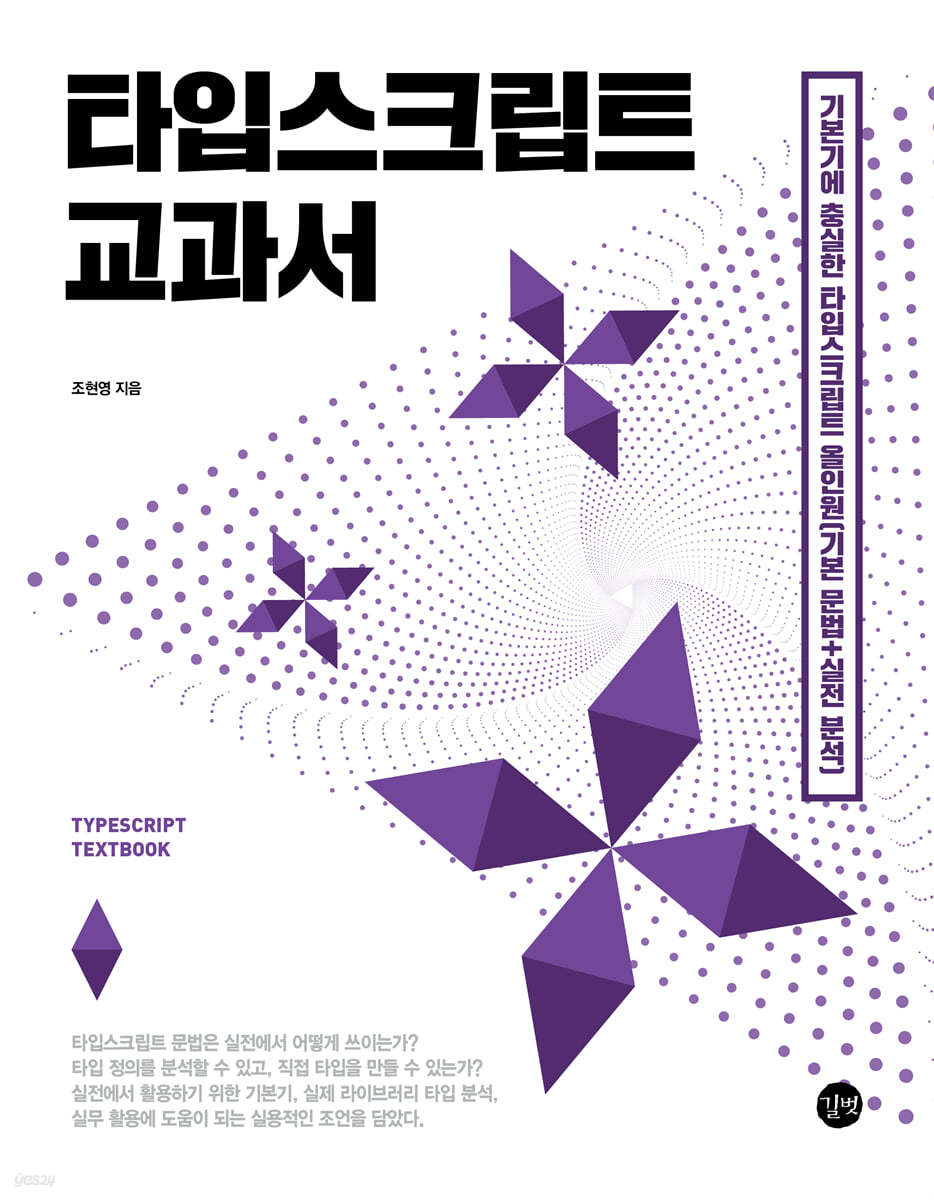
forEach type 만들어보기
- 먼저 기존의 Array 인터페이스를 선언병합 하는 과정이 필요하다.
- 선언병합 이후 테스트 케이스를 추가해가면서 매개변수를 수정한다. (실제 구현은 하지 않았기 때문에 실행되지는 않는다.)
- value type을 제네릭으로 받아야 value에 상관없이 적용가능함.
interface Array<T>{
myForEach(callback:(v:T, i:number, a:T[])=>void):void;
}
const array = [1,2,3];
[1,2,3].myForEach((v)=> {})
map type 만들어보기
interface Array<T>{
myForEach(callback:(v:T, i:number, a:T[])=>void):void;
myMap<U>(callback:(value :T, index:number , array: T[]) => U): U[];
}
- callback fn의 value는 array의 원소 type인 T이여야 함.
- return type은 기존의 원소 type과 다를 수 있으므로 제너릭을 사용
filter type 만들기
- string|number[]에서 string만 filter할 경우 return type이 달라지는 현상 발생
- 새로운 제너릭 도입 단, 배열요소의 타입을 벗어 날 순 없음. ("S extends T")
- 타입서술 함수를 통해 타입을 직접적으로 좁혀주는 방식을 사용함, 타입서술함수는 boolean을 반환해야함.
interface Array<T>{
myForEach(callback:(v:T, i:number, a:T[])=>void):void;
myMap<U>(callback:(value :T, index:number , array: T[]) => U): U[];
myFilter<S extends T>(callback : (v:T, i: number , a : T[]) => v is S, thisArg? : any): S[];
myFilter(callback : (v:T, i: number , a : T[]) => boolean, thisArg? : any): T[];
}
reduce type 만들기
- 3가지케이스, 초기값이 없는경우, 초기값이 있는데 array T와 타입이 동일한 경우, 초기값이 있는데 array T와 타입이 다른경우 존재
myReduce(callback : (previousValue : T, currentValue : T, currentIndex :number, array: T[]) => T):T;
myReduce(callback : (previousValue : T, currentValue : T, currentIndex :number, array: T[]) => T , initalValue : T):T;
myReduce<U>(callback : (previousValue : T, currentValue : T, currentIndex :number, array: T[]) => U ,initalValue : U): U;flat type 분석하기
-
flat 메서드의 매기변수 => A,D 를 제너릭으로 받음 A는 원본배열, d는 매개변수인 낮출 차원수임
-
FlatArray는 컨디셔널 타입을 인덱스 접근타입으로 나타냄 => depth가 -1이라면 done이라서 Arr type을 반환하고 아니라면 recur type을 반환
-
recur 타입은 다시 컨디셔널 타입을 실행
-
Arr extends ReadlonlyArray 라면? 의 의미
-
모든 배열은 ReadonlyArray를 extend 할 수 있으므로, 참임 (readonly T[]) 와 같은 경우임.(배열인지 아닌지 check하는 조건)
-
뒤에 배열은 depth를 1줄이고 다시 줄인 depth를 바탕으로 FlatArray를 호출하는 역할임
-
detph가 -1일경우 done 상태가되면서 Arr를 반환, 아니면 InnerArr를 계속해서 전달함.
-
infer가 추론되는 방법?
-
ReadOnlyArray 는 readonly T[]와 동일함. => 이러면 괄호를 하나 벗길 수 있도록 쉽게 추론가능
-
아니면 ReadOnlyArray에서 내부구현사항에 return값이 []가 붙혀서 반환되는걸로 추론?
type FlatArray<Arr, Depth extends number> = {
"done": Arr,
"recur": Arr extends ReadonlyArray<infer InnerArr>
? FlatArray<InnerArr, [-1, 0, 1, 2, 3, 4, 5, 6, 7, 8, 9, 10, 11, 12, 13, 14, 15, 16, 17, 18, 19, 20][Depth]>
: Arr
}[Depth extends -1 ? "done" : "recur"]; // 컨디셔녈 타입을 인덱스 접근타입으로 나타냄
interface Array<T> {
flatMap<U, This = undefined> (
callback: (this: This, value: T, index: number, array: T[]) => U | ReadonlyArray<U>,
thisArg?: This
): U[]
flat<A, D extends number = 1>(
this: A,
depth?: D
): FlatArray<A, D>[] // flat 메소드, FlatArray 를 반환함.
}
interface ReadonlyArray<T> {
flatMap<U, This = undefined> (
callback: (this: This, value: T, index: number, array: T[]) => U | ReadonlyArray<U>,
thisArg?: This
): U[]
flat<A, D extends number = 1>(
this: A,
depth?: D
): FlatArray<A, D>[]
}
infer 키워드
- 컨디셔널 타입과 함께 사용되어야 함. 추론을 맡기고 싶은 부분에 infer 키워드와 타입변수를 넣음.
Promise, awaited type분석
- Promise Constructor 가 Promise type의 구현체임.
interface PromiseConstructor {
readonly prototype: Promise<any>;
new <T>(executor: (resolve: (value: T | PromiseLike<T>) => void, reject: (reason?: any) => void) => void): Promise<T>;
all<T extends readonly unknown[] | []>(values: T): Promise<{ -readonly [P in keyof T]: Awaited<T[P]> }>;
race<T extends readonly unknown[] | []>(values: T): Promise<Awaited<T[number]>>;
reject<T = never>(reason?: any): Promise<T>;
resolve<T>(value: T): Promise<Awaited<T>>;
resolve<T>(value: T | PromiseLike<T>): Promise<Awaited<T>>;
}
declare var Promise: PromiseConstructor;
Awaited Type
- await 키워드가 붙으면 TS에서 타입이 Awaited 제너릭 타입을 감싸짐.
- 컨디셔널 타입의 3번 중첩
- 첫번째 조건 null, undefined check => Awaited = null, Awaited = undefined임
- 두번째 조건 object여부 check, primitive type일경우 Awaited = string, Awaited = number임
- T가 객체인경우에도 then이라는 메소드를 가지고 있어야함.(&조건)
- 3번째 조건 infer를 두번하는 이유 => chaining 때문에(형태를 맞춰서 추론..)
- T가 프로미스 객체일일때 => Awaited 는 Awaited가 됨. T는 Promise이고, V는 X임. (infer 키워드를 통해 추론함)
- 따라서 Awaited<Promise>는 Awaited가 됨.
- Awaited<Promise> = Awaited
type Awaited<T> =
T extends null | undefined ? T : // special case for `null | undefined` when not in `--strictNullChecks` mode
T extends object & { then(onfulfilled: infer F, ...args: infer _): any } ? // `await` only unwraps object types with a callable `then`. Non-object types are not unwrapped
F extends ((value: infer V, ...args: infer _) => any) ? // if the argument to `then` is callable, extracts the first argument
Awaited<V> : // recursively unwrap the value
never : // the argument to `then` was not callable
T; // non-object or non-thenable
